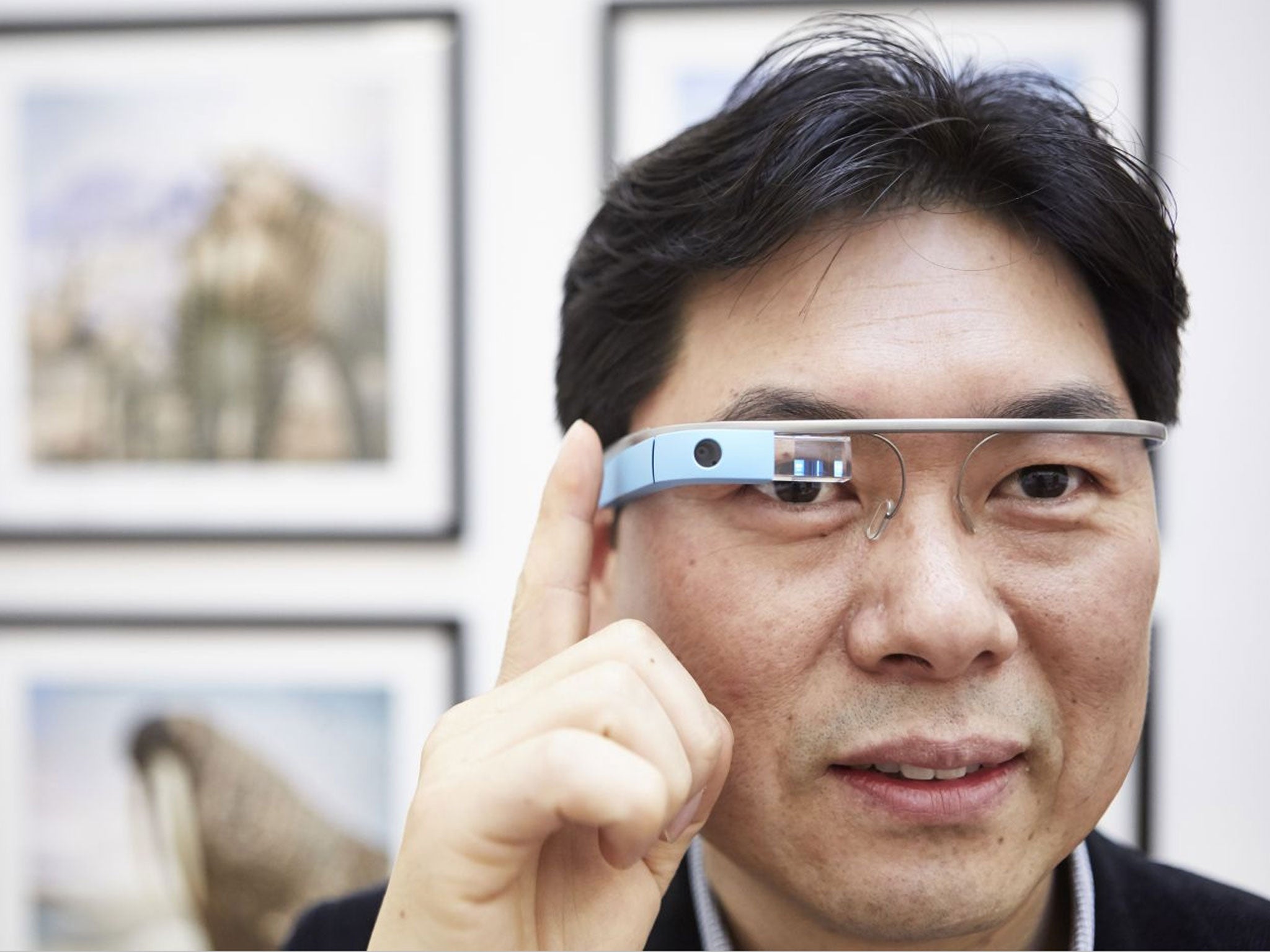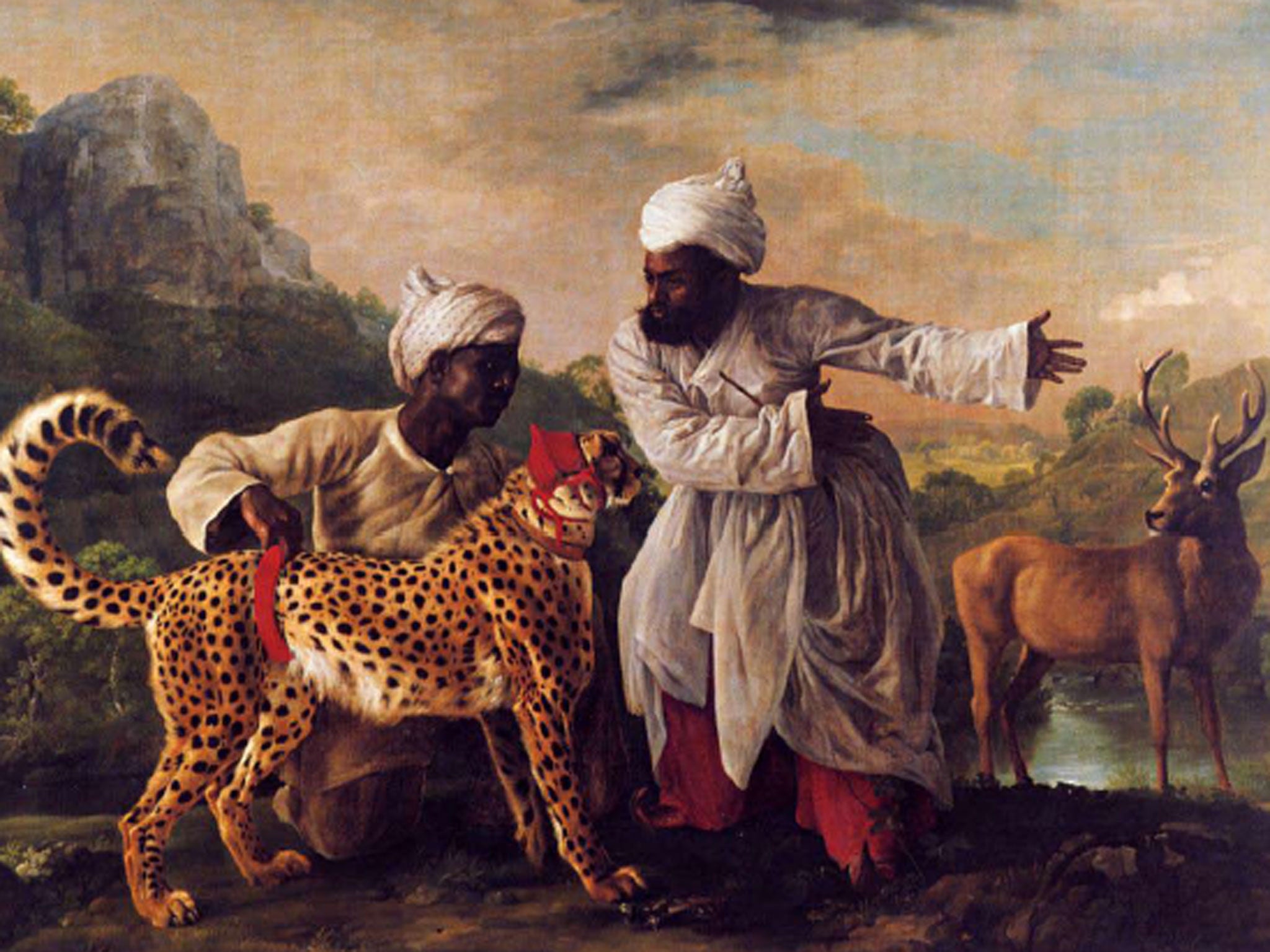How Google Glass could change the way we view art
Trial uses wearable computers to overlay information on paintings

It is a frustration familiar to anyone who has attended a blockbuster exhibition – the scrummages around the information cards that make it impossible to read about the paintings on show.
But the need for sharp elbows at art galleries could soon be a thing of the past thanks to Google Glass spectacles and pioneering research being carried out by British-based scientists .
A team from Manchester Metropolitan University (MMU) is investigating how Google’s new wearable computers can be used to display instant information on artworks as visitors walk round museums, possibly replacing gallery guidebooks and audio guides entirely.
The George Stubbs painting Cheetah and Stag with Two Indians at Manchester Art Gallery has been selected as a test subject, with visitors ranging from art students to senior citizens trying out the new technology.
The wearer uses the spectacles to take a picture of the painting. This is recognised by Google Glass, which provides them with the artwork information they would usually read on the wall. Audio information about Stubbs, the 17th century English artist best known for his paintings of horses, is also available for the wearer to select.

A university spokeswoman said the early responses to the trial had been positive. “The testers were made up of a mix of art gallery goers who decided to take part on the day and techies who’d seen a call-out on Twitter. They were all ages, genders and occupations. After a bit of getting used to the Glass they all seemed to have fun with it and gave us some great feedback.”
The project was dreamed up following a visit from the California-based Google Glass software designer Cecilia Abadie, of 33 Lab Inc, who is working with the MMU team to develop the necessary software.
Further testing for the Google Glass Augmented Reality Project will be carried out on six more paintings at the gallery later this month. The team hopes by then the glasses will also be able to provide suggestions and recommend similar works, for example other oil paintings of that period or other works by Stubbs. The wearer could then be guided to their location in the gallery.
Another potential use is sharing information within groups of visitors, so friends can recommend particular paintings to each other while in different rooms.
Dr Timothy Jung, from the university’s department of tourism management, believes the project could transform the museum experience.
“I think Google Glass is going to be huge in every industry. If you’re looking at a guidebook or even your phone, that creates a barrier between you and the art – it makes it harder for you to engage,” he said. “Using Glass in this way removes that barrier, you can engage directly with the artworks and have access to the background information. It will really enrich the experience.
“Wearables – whether that’s Google Glass, watches or even clothing – are going to be the future of tourism.”
Further plans for the project include testing the technology on sculptures and three-dimensional works. Dr Jung said: “Manchester was the home of the Industrial revolution, so it’s right that it could be a part of the digital revolution as well.”
Join our commenting forum
Join thought-provoking conversations, follow other Independent readers and see their replies
Comments
Bookmark popover
Removed from bookmarks